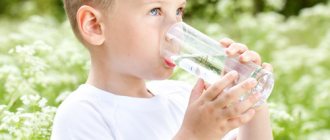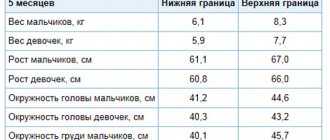A favorite topic of conversation for new mothers going out to the playground for a walk is, of course, discussing the development of their children. Each strives to boast about the achievements of their baby, describing his first “exploits” as colorfully as possible. The topic of nutrition also does not go unnoticed. First complementary foods, feedings, mixtures, cereals and food from the common table - this is precisely what almost heated debates begin about. After reading forums and listening to grandmothers' advice, each mother defends her own menu according to which she feeds her child. After all, she knows exactly what is necessary for her child and in what volume. Feeding a two-year-old child is especially intriguing - when some parents insist that the baby is still very small and needs mother’s milk and baby food with a clearly defined portion size, while others already feed such children with dishes from the common table until they are full themselves. So which of them is right, what should a child eat at the age of two, and in what quantity and what foods will be useful for him? It is precisely these issues that we suggest you look into.
Menu for a 2 year old child - approximate diet table
Although the baby is happy to sit with his parents at the dinner table, this does not mean that the diet of a 2-year-old child should be identical to the diet of an adult.
The exception is the situation when the family adheres to a healthy lifestyle, and the menu of all relatives contains only healthy products. However, people may view the concept of “healthy eating” in different ways. Thus, in vegetarian families, the child is deliberately deprived of meat or other animal products.
Adherents of a raw food diet compose their menu in such a way that fruits occupy from 50% to 70% of the total volume of food consumed. The benefits of such nutrition systems are questionable for a growing organism.
Grandma’s rich cabbage soup with pies and stewed potatoes with fatty ribs can have an equally detrimental effect on the health of a small creature How can young parents organize food for their two-year-old baby for his benefit?
We exclude harmful products
Since we’re talking about what’s good for a 2-year-old baby and what’s not, let’s immediately discuss what is strictly contraindicated to feed a baby. The list of such products is quite extensive:
- Smoked meats, deep-fried and spicy dishes, fast food products;
- Seafood that can cause an allergic reaction (shrimp, crabs, mussels, red and black caviar);
- Mushrooms;
- Fatty meats (lamb, pork, geese and ducks);
- Milk not adapted for baby food;
- Grapes and melon, which increase flatulence and disrupt pancreatic function;
- Sweets (cakes, candies, ice cream, chocolate, baked goods, shortbread or puff pastry);
- Honey (for children prone to allergies);
- Sparkling water;
- Pasta and sausages (at least you can give them to your child as an exception).
In addition, take into account the individual characteristics of your child’s body. You should not stuff your baby with what is healthy if he has a natural intolerance to a certain product.
Watch your baby's cues when feeding him solid foods
All of the baby's signals during feeding indicate that the baby is eating the appropriate amount of food for him.
There is no exact rule or guideline for how much a child should eat during the day. Simply because every child is different. Babies will eat food and drink as much formula or breast milk as they need.
For example, one 7-month-old baby eats 2 whole jars of baby food in one day, while another 7-month-old baby barely manages to eat one. Also, one child may eat every 2 hours at 7 months, and another every 3-4 hours. Again, each child has different nutritional and milk needs and these needs are selected individually.
We are not afraid and add me to Odnoklassniki and Instagram!
Did you like the article? Subscribe to site updates
"Encyclopedia of Baby Food"!
Don't forget to bookmark us! (CTRL+SHiFT+D) Subscribe to the site, comment, share on social networks.
On our website Encyclopedia Baby Food there is useful information on the nutrition of your children, which is useful for everyone, and we update the Encyclopedia Baby Food website constantly and try to search and write only excellent, verified and necessary information for you and your children.
Disclaimer #1: It is necessary to understand that the author of the articles on the Encyclopedia Baby Food website is not a medical professional, “I am not a doctor.” The information I share is based on my own experience. My goal is not to teach you how to eat or feed your child, but to tell you about what we did, what new things I learned or read. This allows you to expand your knowledge about baby food, allows you to see the whole process so that you can decide whether you like it or whether it’s worth doing the same.
Disclaimer #2 : However, the above does not replace visiting your pediatrician. Before you start complementary feeding, you should seek his professional opinion on the best way to introduce new foods to your baby. Please also note that you need to look at the original date of published articles, as some “best practices” may have changed. Always consult your child's pediatrician about complementary feeding and his or her health.
Disclaimer #3: Keep in mind that every family is unique, and every situation is completely unique. There are no universal solutions. Only you can find what works best for you. Certain goals require certain sacrifices and priorities—not everyone wants to make those choices, and that's GREAT! Just know what you want to achieve and be ready to get to work doing your best!
Disclaimer No. 4: The Encyclopedia Baby Food website uses photos from books on baby food with attribution for a more complete understanding of the information (Article 1274, paragraph 1, part four of the Civil Code of the Russian Federation). Literature on baby nutrition was found freely available on the Internet.
Apricot puree with chicken Banana-apple puree Banana puree Borscht Broth with peas and rice Kohlrabi sandwich Zucchini jam with strawberries Buckwheat with green peas Buckwheat porridge Buckwheat porridge with apricots Buckwheat porridge with banana Buckwheat pilaf Children's vinaigrette Children's ketchup Children's cucumber salad Children's salad Olivier Baby puree of strawberries, banana, yellow cherries, matsoni and cookies with cereals Baby puree with cottage cheese and fruit Homemade pizza Breakfast outside Baking cauliflower Baked carrots Baked carrots and cherries with millet Cabbage with white beans Mashed potatoes Quinoa and pumpkin porridge Porridge Quinoa porridge for breakfast Quinoa and apple Strawberry puree Strawberry puree with banana Strawberry compote Compote of wild apples and raspberries Compote of dried fruits steamed in a thermos for a child over 8 months Corn porridge Corn porridge with pear Corn porridge with pumpkin Corn porridge with pumpkin and carrots Corn porridge with apple and carrots Chicken cutlets with carrots Chicken with carrots, sweet peppers and potatoes Navy pasta Pasta with orange sauce Carrot and potato puree Carrot and rice casserole Carrots with chicken Amanita from eggs and tomatoes Vegetable puree from cauliflower and carrots Vegetable soup with corn semolina Vegetable soup with cheese and corn semolina Vegetable cream soup with bell pepper Oatmeal Pancakes with hot kefir Omelette in a bag Omelette pancake Peach puree Zucchini and carrot pie Zucchini pie White cabbage pizza Rabbit pilaf Chicken pilaf with green peas and corn Banana and cherry puree Banana, cottage cheese and porridge puree 4 grains Broccoli (cauliflower) puree Broccoli, zucchini and cauliflower puree Blueberry puree Pear puree Pear and banana puree Pear and pumpkin puree 7 months + Pear, pumpkin and peach puree Pear, apple, plum and prune puree Turkey puree Zucchini puree Zucchini and broccoli puree Zucchini, carrot and potato puree Quinoa and banana puree Quinoa and carrot puree Quinoa puree, banana and carrots Quinoa, zucchini and carrot puree Quinoa, peach and raspberry puree Quinoa, cauliflower, apple, pea and mint puree Quinoa, apple, pear and raisin puree Quinoa, apple, carrot puree Rabbit, broccoli puree and cauliflower Chicken, carrot, potato, apple and pea puree Raspberry, cherry and banana puree Carrot puree Carrot and apple puree Carrot, potato, broccoli puree with cheese Carrot, potato, apple and quinoa puree Carrot puree , pumpkin, apple and prunes Carrot, apple and potato puree Turnip and carrot puree Plum puree Cottage cheese, strawberry and banana puree Pumpkin puree Pumpkin and banana puree Pumpkin and zucchini puree Pumpkin and apple puree Pumpkin puree, apple and banana Cauliflower and broccoli puree Cauliflower and potato puree Cauliflower and rice puree Cauliflower and apple puree Cauliflower, green pea and zucchini puree Cauliflower, turkey and potato puree Cauliflower and potato puree and zucchini Cauliflower, carrot and broccoli puree Cauliflower, carrot, cheese and rice puree Cauliflower, apple and zucchini puree Zucchini puree Zucchini and potato puree Zucchini, carrot and apple puree Cherry puree Blueberry puree from prunes Apple, pumpkin, carrot puree and a little curry Apple and pear puree Apple and strawberry puree Apple, strawberry and cherry puree Apple, peach and banana puree Carrot and pumpkin puree Turkey, potato and carrot ragout Zucchini ragout , carrots and broccoli Stew of fish, potatoes, carrots and broccoli Rice porridge Whole grain rice porridge Rice porridge with carrots Rice porridge with pumpkin Rice porridge with apples Rice porridge with apple and pear Rice porridge with apple and pumpkin Fish cutlets with vegetables Semi-finished fish products Fish balls with ketchup Fish soup for a child Fish soup with salmon and celery Carrot and kohlrabi salad Chickpea salad The laziest soup Creamy kohlrabi soup Oatmeal smoothie One-pot sauce Pea and bacon soup Salmon soup Cauliflower soup Soup with meatballs for the picky eater Cream soup of rabbit, pumpkin, potatoes, broccoli and cauliflower Cream soup of pumpkin with mushrooms Cream soup with broccoli and celery Pork soup/stew with potatoes and carrots Cheese pasties Cheese sauce with pumpkin (recipe) Annabelle Carmel) Pumpkin-apple puree Pumpkin-apple juice Pumpkin puree soup Fruit salad Bread lavash Cauliflower with cheese Linden tea and thyme Applesauce Apple juice
The main components of the diet of a 2 year old child
The daily intake of products that a 2-year-old child should receive should be divided into 4-5 doses. A typical menu for a child at this age looks something like this:
- Breakfast: milk porridge + bread with butter and cheese + tea/cocoa with milk.
- Second breakfast (can be combined with the first): fresh fruit + juice.
- Dinner: must include 3 dishes
- first – soup/borscht + bread;
- second – meat / liver / fish dishes + vegetable side dish / salad / porridge;
- dessert + compote / tea.
- Afternoon snack: cottage cheese casserole / cheesecakes / fruit pudding + jelly / compote / milk.
- Dinner: omelet/vegetable stew + kefir/ryazhenka/tea.
It is believed that the most nutritious meal should be lunch, while the first breakfast and dinner should be approximately equal in calorie content. Second breakfast and afternoon snack serve as snacks.
The following table will tell you what to feed a 2-year-old baby:
Vegetables, fruits, berries
- Boiled, stewed or steamed vegetables no longer need to be pureed (with the exception of mashed potatoes) - the baby can already chew pieces of food.
- Vegetables and fruits can be served in the form of fresh salads, for example: carrots + apple, cucumbers + white cabbage + olive oil.
- You can season some vegetable salads with low-fat sour cream. Walnuts and pre-steamed prunes are added in small quantities to salads.
- Vegetables are also combined in stews, included in soups or stuffed with minced meat.
- žThe child can be given whole or cut into pieces fresh fruits and berries, as well as make dumplings with them, and include them in porridges and cottage cheese casseroles, puddings.
- Baked fruits with sugar will be a wonderful dessert for those with a sweet tooth.
Cereals, cereals
- Semolina, oatmeal (with milk or with dried apricots), rice, wheat, buckwheat - this is what a child should receive every day. Porridges are seasoned with butter or topped with meat gravy. Avoid eating barley.
- The porridge is cooked not crumbly, but viscous (for this, liquids are taken 3-3.5 times the volume of the cereal).
- Based on the porridge, you can prepare meatballs, cutlets, and casseroles.
- Ready-made porridges are supplemented with berries and fresh or boiled fruits or lightly flavored with honey.
Soups, puree soups
- Up to 150 ml of soup or borscht per lunch is the norm for a baby aged 2 years.
- The first courses are cooked in meat broth. Meat is chosen from low-fat varieties. It is advisable to drain the first fat, then cook the meat over low heat, constantly skimming off the foam.
- Pepper, bay leaf and tomato paste should be excluded.
Meat dishes
Low-fat meats are included in cutlets, meatballs, lazy cabbage rolls, soup with meatballs, potato-meat or meat casserole, meat goulash, vegetable stew, soufflé, and also in puree soup (by grinding the boiled piece through a meat grinder).
- 210 g of fish is the weekly norm for a 2-year-old child, which should be divided into 2-3 doses throughout the week.
- Preference should be given to trout and lean white sea fish: hake, tuna, pollock, mackerel, cod.
- The following dishes are prepared from fish: meatballs, cutlets, baked fish, which is served with a side dish of rice and fresh vegetables.
Liver
- The product is rich in easily digestible proteins, promotes digestion and blood formation.
- žThe baby’s diet includes chopped boiled liver with porridge or stewed vegetables, as well as liver pancakes.
Nutrition for a child from two to three years old. What to feed a 2.5 year old child
December 12, 2014
At 2-2.5 years old, the child’s gastrointestinal system has not yet completed its formation, so the child cannot completely switch to an exclusively “adult diet”. It is more correct to cook for a child, but in larger quantities so that the whole family can eat.
At 2-2.5 years old, the child’s gastrointestinal system has not yet completed its formation, so the child cannot completely switch to an exclusively “adult diet”. It is more correct to cook for a child, but in larger quantities so that the whole family can eat. That is, you cannot treat your child to pork chops, smoked fish, or fried potatoes. But you can stew a vegetable stew, bake fish in foil, make a cottage cheese casserole, and the whole family can enjoy these healthy dishes.
A child at two years old already becomes an active “CHEWER”, as he can use his 16-20 teeth. There is almost no need to grind food using a blender (except perhaps if you are preparing pate). If your baby still wants to eat liquid and semi-liquid food, carefully switch to solid food and give him food from your plate. This way he will get used to the fact that solid, non-chopped food is normal. The child needs to chew, as the jaw must receive load. Otherwise, the jaws may not grow as they should, then when permanent teeth erupt, there will be a lack of space and the baby’s teeth may be uneven.
Signs that your baby is full
- Closing the mouth when the spoon approaches it
- Spitting out food when feeding
- Turning your head to the side when the spoon approaches
A healthy, well-fed baby should wet diapers regularly and have bowel movements once or twice a day.
When visiting a doctor, you need to make sure that the child is healthy so that the child's height and weight are properly monitored according to the schedule.
If you have any doubts about feeding your baby, you should consult your pediatrician about foods and the size of solid foods. The doctor should be able to help establish feedings and also help allay concerns.
It is important to remember to consult with your pediatrician about introducing solid foods to your baby and specifically discuss any foods that may pose an allergy risk to your baby.
No two children are alike and will eat the same foods. And the amount of food for each child is individual!
To calculate your daily milk intake you can use the following:
| Age | Weight | Calculation of daily milk volume | |
| 1 | 1 month | 3500 | 3500÷5=700 |
| 2 | 5 months | 6200 | 6200÷7=885 |
Diet of a 2.5 year old child.
Nutritionists unanimously speak about the importance of a diet for a 2.5-year-old child. The child should have 4 meals a day, this is breakfast, lunch, afternoon snack and dinner, at the same time. The child needs to eat in small portions. The main meal is lunch. This meal accounts for approximately half of the daily calorie intake (40-50%). The daily calorie requirement is 1400 - 1500 kcal. The proportion of proteins, fats and carbohydrates will look something like this: approximately 1 part protein, 1 part fat, 2 parts carbohydrates.
What to feed a 2.5 year old child: processing methods
We will not say anything new on this issue. You already know everything. We cook, steam, stew and bake for all children at one, and two, and 2.5, and three, and four. We avoid fried foods due to the formation of harmful substances (carcinogens) that occur when vegetable oil is heated.
What foods can be given to a 2.5 year old child?
- Dairy products must be present in the baby’s diet (provided normal absorption of lactose). A breastfed child does not need cow's milk; we give him fermented milk products.
- The optimal amount of dairy products per day is 550-600g.
- Be sure to give your baby 2-2.5 g of cheese (approximately 50-100 g), sour cream/cream (10-20% fat content, 10-20 g).
- Fermented milk products can be offered without or with culinary processing (for example, just cottage cheese or cheesecakes, casserole, etc.). Meat and fish contain animal protein, which is very necessary for the child. A child can eat about 100g per day. meat/fish. Gradually increasing the amount to 120g. up to three years.
- Choose lean meats: veal, rabbit, lamb, you can use lean pork, as well as poultry. From offal you can take liver, tongue, heart. Serve the meat with vegetables and cereals.
- Low-fat fish should also be present on the baby's table (occasionally fatty fish, such as salmon, is also possible). Fish contains a lot of potassium, magnesium, phosphorus, and B vitamins.
- Steam meat and fish for your child, stew, boil and bake, but your baby does not need to fry.
- Eggs should also be in the baby's diet. You can boil an egg and offer it a couple of times a week, you can make a diet omelet.
- Legumes and nuts are rich in proteins that are essential for a growing body. They contain high-quality plant-based protein, so prepare your child's meals using these products.
- Cereals, cereals - porridge should be present in the child’s diet every day. This is a very healthy product (it contains vegetable proteins, vitamins, minerals, fiber), and it will also give the baby a lot of energy. Prepare porridge from the following cereals: buckwheat, wheat, barley, corn, pearl barley, oatmeal, white and brown rice. Give your baby noodles sometimes.
- Vegetables (and greens) and fruits should enter the child’s body in sufficient quantities. They contain vitamins, minerals, dietary fiber and vegetable fats. Choose our native, not overseas vegetables and fruits, as well as berries. The main advice is to keep everything in season.
- Fats help the formation of new cells and promote normal brain function. Vitamins A, D, E and K are not absorbed by the body without some amount of fat. Therefore, small amounts of butter and vegetable oils should be included in the child’s diet.
How much should a baby under 1.5 years eat?
It is important to keep in mind that babies need different amounts of milk depending on the time of day. In the first few months, the baby needs to be fed every 2-2.5 hours with a 6-hour night break. In this case, the amount of milk consumed should have the following dynamics:
- First day. The baby eats about 60 ml of food - approximately 7-11 ml per feeding.
- Second day. The baby eats approximately 90-110 ml of milk - about 15-25 ml per feeding.
- Third day. The volume of food eaten increases to 190 ml.
- Fourth day. The baby eats more than 300 ml per day (intensive dynamics are observed due to the improvement of the baby’s “sucking” skill by this period).
- The fifth and sixth days - from 350 or more.
Next, you need to control the nutritional intake taking into account the baby’s weight:
- From 7 days to 8 weeks - the total volume of milk per day is 1/5 (approximately 500-700 ml) of the baby’s weight.
- From 2 to 4 months – 1/6 of the baby’s weight (about 900 ml). You can learn more about feeding during this period from the articles - How much should a child eat at 2 months and How much should a child eat at 3 months.
- From 4 months to 6 – 1/7 of the child’s weight (approximately 1000 ml).
- From 6 to 12 months – 1/8 of the baby’s weight (about 1100 ml).
- From 1 to 1.5 years – 1/9 of the child’s weight (approximately 1300 ml).
This daily amount of food must be divided by the number of feedings in order to understand how much milk the child should eat at a time. In this case, one feeding should last at least 10 minutes. You can learn more about this from the article - How much milk should a child eat.
It is important to make sure your baby is getting enough milk. Tips from the article will help you figure this out - How much should a newborn eat? It is also necessary to remember that from 5 months you need to switch your baby’s meals to 5 times a day. During this same period, you can start complementary feeding using special baby formulas. To ensure that your child always has a good appetite, take long walks with him.
Principles of proper nutrition
- The ratio of proteins and fats, as well as carbohydrates in the diet of a 2-year-old child should be 1:1:4 or 1:1:3. Proteins are the main building material for the growth of a child’s body, so the children’s diet should contain sources such as dairy products, poultry, meat products, egg dishes, and fish. Carbohydrates are the main source of energy for the child's body. The child gets them from cereals, fruits, sugar, bread, and vegetables. Fats are also needed for the energy needs of the baby's body.
- A two-year-old child receives an average of 1400-1500 kcal per day. In terms of calorie content, meals should be distributed as follows: 25% of calories for breakfast, 30% of calories for lunch, 15% of calories for an afternoon snack and 30% for dinner.
- It is important to ensure a sufficient supply of macro- and microelements, especially those responsible for bone health. The child will receive calcium from cottage cheese, milk, cheese, peas, dried apricots, cabbage, prunes, oatmeal and other products.
- Spices and salt in children's dishes should be in minimal quantities.
4-6 months:
If baby can sit up on his own and seems hungry after primary breastfeeding, baby is ready to introduce solid foods! The child should be able to hold his head up well, close his mouth with a spoon, and move food to the back of his mouth. All signs of readiness for complementary feeding can be read here.
What to feed your baby:
Formula or breast milk
1-3 tablespoons of food for 1 or 2 dishes
Needs of a 2 year old child
- Your baby should consume about 600 g of dairy products Kefir is recommended in amounts up to 200 ml per day.
- In addition to the yolk, you can start giving the white of a boiled egg. The norm is considered to be half a boiled egg per day.
- Cheese for babies is recommended only with low fat content and in the amount of 20 g per week.
- Cottage cheese is recommended 50 g per day. It can be mixed with fruit, sour cream, sugar. You can also make puddings, cheesecakes, and dumplings from cottage cheese.
- Meat dishes are prepared from lean veal, beef and pork. Children are also given chicken. These dishes are recommended for consumption in the first half of the day, as they take a long time to digest. A sufficient amount of meat per day for a 2-year-old child is considered to be 50-80 g. It is acceptable to include low-fat boiled sausage and lean boiled ham in the child’s diet. Also, at two years old, you can start offering your child stewed meat pieces and liver pate.
- Several times a week, the child’s meat dish is replaced with fish. The fish is boiled, stewed, and cutlets and meatballs are also made from it. A two-year-old child can be given a piece of herring. A child should eat up to 175 g of fish per week.
- of vegetables per day, but it is recommended to consume up to 150 g of potatoes per day. Vegetable purees can be single-component or complex. A two-year-old child can be given cabbage, beets, carrots, onions, pumpkin, eggplants, tomatoes, turnips, radishes, cucumbers, bell peppers and other vegetables.
- Fruits and berries are recommended in quantities of about 150-200 g per day.
- The diet may include pasta and flour dishes.
- The norm for bread is considered to be up to 100 g per day (wheat - about 70 g, rye - about 30 g).
- The norm for confectionery products is 10 g per day, and for sugar - up to 50 g per day.
- In addition to porridges, a child can try cereal casseroles, as well as children's muesli. The healthiest foods are oatmeal, buckwheat and rice porridge, as well as millet and corn. You can already introduce barley porridge into the diet of a two-year-old child.
- Vegetable oil should be added to vegetable dishes in amounts up to 6 g per day.
- of butter per day.
What liquids should I give?
A 2-year-old child needs 100 ml of water per day for every kilogram of weight. This daily amount of water includes any liquids that the child consumes (soups, compotes, milk and others). If the weather is hot, the volume of liquid should be increased. On average, a child aged two years is advised to drink 1500 ml of water per day.
A two-year-old child can be given weak tea, rosehip infusion, compote, cocoa, milk, fruit and vegetable juices. It is recommended to drink juice in amounts up to 150 ml per day.
10-12 months:
Many children will feed 3 times a day at this stage; including cereals, fruits, vegetarian dishes, bread, meat, fish, eggs.
It is important for parents to pay attention to the baby's cues, as the baby's feeding patterns will change daily and may be affected by the activities going on around him. The child will eat only the right amount of food for himself.
What to feed your baby:
Formula or breast milk
Complementary feeding 3 times a day plus 2 additional snacks
How to create a menu?
- For breakfast, the child is given a main dish in the amount of 200 g and a drink in the amount of 100-150 ml, as well as bread with butter or cheese.
- For lunch, it is useful for a child to eat a salad of fresh vegetables or another snack in the amount of 40 g and a first course in the amount of 150 ml. Also for lunch, the baby is given a meat or fish dish in the amount of 50-80 g and a side dish in the amount of 100 g. In addition, for lunch they are given a drink, the volume of which will be 100 ml.
- For an afternoon snack, the child is recommended milk or kefir in a volume of 150 ml, as well as cookies (15 g) or homemade cakes (45 g). In addition, you should give fruits or berries for an afternoon snack.
- For dinner, the child, as for breakfast, is given a main dish in the amount of 200 g and a drink in the amount of 150 ml.
8-10 months:
Many children will eat 3 meals a day at this stage; including cereals, fruits, vegetarian dishes, bread and meat, maybe eggs.
It is important for parents to pay attention to the baby's cues, as the baby's feeding patterns will change daily and may be affected by the activities going on around him. The child will eat only the right amount of food for himself.
What to feed your baby:
Formula or breast milk
Complementary feeding 3 times a day
What should not be included in the diet?
At the age of two, children are not given:
- Fried foods.
- Mayonnaise and ketchup.
- Chocolate.
- Dairy products with flavorings, thickeners, dyes and other additives.
- Frankfurters and sausages.
- Pearl barley porridge.
- Spread and margarine.
- Duck and goose meat.
- Smoked meats.
- Pickled foods.
- Mushrooms.
- Salted fish and seafood.
- Carbonated drinks.
- Coffee.
Examples of healthy recipes
Beetroot salad with cucumber and green peas
Take 50 g of beets and 25 g of fresh cucumber and green peas. Boil the peas and beets. Finely chop the cucumber, add cooked peas and grated beets. Season with 5 g of sunflower oil.
Apple and prune salad
Wash and peel the apple (70 g), grate on a coarse grater. Peel prunes (30 g) and soak briefly, then finely chop. Combine grated apple and chopped prunes, add a teaspoon of sugar or honey.
Soup with fish balls and potatoes
Take 300 ml of fish broth, bring to a boil, add potatoes (50 g), carrots (15 g), onions (10 g) and parsley root (5 g) cut into small cubes. Cook until the vegetables are ready, then add the fish fillet meatballs to the soup. For them, take 60 g of fillet, half a chicken egg, 10 g of white bread crumb and 20 ml of milk. Wait for the meatballs to float to the top. Season the soup with fresh dill (3 g).
Steamed meatloaf with omelet
Prepare a cutlet mass from 100 g of meat, a quarter of a chicken egg, 30 ml of milk and 20 g of white bread. Mix the ingredients well and place on gauze moistened with cool water. You should end up with a layer of minced meat about 1.5 centimeters thick. Separately, prepare a steam omelette from one egg and 25 ml of milk. Place the omelette on top of the minced meat and carefully bring the edges of the gauze together to form a roll. Steam for approximately 30 minutes.
Millet porridge with pumpkin
Take 150 ml of milk or water, bring to a boil, add peeled and diced pumpkin (100 g) and leave to simmer for 7-10 minutes. At this time, rinse 30 g of millet cereal in hot water several times. Pour it into water or milk with pumpkin, add a spoonful of sugar and cook for about 1 hour over low heat. Serve with butter.
Steamed cottage cheese pudding with raisins
For two servings, take 200 g of cottage cheese, grind it through a sieve, add 20 g of washed raisins. Grind the yolk of a chicken egg with 20 ml of milk and 16 g of sugar. Combine the mashed yolk with the curd mass, add 10 g of butter (you need to melt it first) and 4 teaspoons of semolina. Add the beaten egg white last. Place the resulting mixture into greased molds. Steam for 30-40 minutes.
Possible problems
At the age of two, the child strives for independence. At this time, many children begin to experience a developmental crisis, which also affects the area of nutrition.
What to do if a child does not eat the foods he needs?
Many parents worry that their child is not eating enough, in their opinion, varied. At the age of two, babies can eat the same dish for several days, and this is the norm. There is no need to worry if your child eats at least one product from these groups: dairy products, meat, vegetables, grains and fruits. For example, if your baby’s menu includes bananas, potatoes, chicken, bread and kefir, his diet can be called varied.
If the child completely refuses food, there is no need to insist or force it. Offer your baby food at specific times (based on a routine), avoid snacking, and ensure that food is the right temperature and texture. The best strategy is to provide a constant supply of food, but not to provide easy-to-digest sweets or other foods that the child can eat between meals. When the child is hungry, he will eat what you give him.
How do you understand that lack of appetite is a symptom of illness?
In most cases, poor appetite is not associated with illness, but with frequent snacking and a lack of eating routine. Another difficulty can be caused by an excessively large portion. Seeing a large amount of food, a discouraged child will rush to refuse food altogether. It is best to give your child food in small quantities, and when he has eaten everything, offer more.
However, loss of appetite is indeed a sign of illness, for example, diseases of the digestive tract or any acute infections. Parents may be led to believe that poor appetite is associated with illness by the presence of other symptoms - fever, nausea, weight loss, changes in stool, and others.
Sources:
https://womenstalk.ru/menyu-rebenka-v-2-goda-tablica-primernogo-raciona.html https://teddyclub.info/ru/2-3-goda/pitanie-rebenka/pitanie-rebenka-ot -dvuh-do-treh-let-chem-kormit-rebenka-v-2-5-goda https://o-krohe.ru/detskoe-pitanie/2-goda/
How does a mother know if her baby is eating enough adult food?
Table of contents:
All pediatricians will say: “The child will never go hungry!” A huge number of healthy children will eat the right amount of the foods they need. Parents need to resist the urge to offer “just one more bite” when the child indicates they are finished. After all, you don’t want to accidentally disrupt the child’s developing ability to self-regulate his or her feeding by continuing to try to feed or nurse the child. It is important for parents to pay attention to their baby's signals, as the baby's feeding patterns will change daily and may be affected by activities around him. Offering a good balanced diet can ensure that the child eats the right amount of nutrients.











